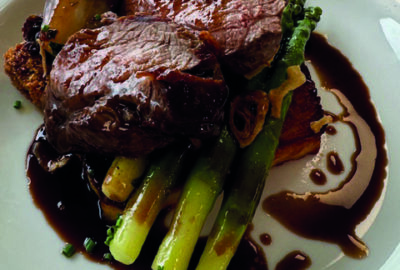Schools may be considering bringing their catering back in-house as part of cost-cutting measures, but does a DIY approach help to combat rising food and energy costs?
Liz Greene from CMC School Food, catering consultants points out that a key benefit of in-house catering is that schools can monitor costs and ensure money is directed where required. “Schools can take control of the catering service and create a bespoke offer for their pupils and staff, decide what’s on the menu and how they procure,” she says. “If a school has a contract caterer, they have little control over menus and purchasing or even staffing. The contract caterer decides how the budget is allocated and what food is purchased. Often this is to the detriment of the food quality which can lead to food wastage and low uptake.”
At Gordonstoun school in Scotland, Jamie Campbell, Catering Manager, thinks in-house catering does help with rising costs “as we can share with the team what we’re spending and because they have input into the ordering, they can see the price rises for themselves. It makes them stop and think whether a different ingredient could be used instead. With a contract caterer, the person making those decisions is not on the shop floor. We’ve also switched to local suppliers which reduces delivery charges as well as our carbon footprint.”
At Thomas Deacon Education Trust (TDET), catering was brought back in-house around ten years ago. Michael Dove, catering operations manager, says “We would always look to keep the catering in-house as it offers the best solution for our students.” He thinks the key advantage is that it enables schools to negotiate prices with suppliers and use more local suppliers. “It doesn’t really have an impact on any energy costs, but allows you to have better control on food costs.”
Apart from cost considerations, in-house catering can result in more staff job satisfaction and retention. According to Clare Lovett from Relish School Food, as staff become part of the school and any conflict of interest (by them being employed by a third party) is removed, their sense of belonging improves.
This is echoed by Jo Wotton, School Catering Consultant, who says “There’s definitely a feeling of being valued and part of the school and not a service provider, so staff retention is less of an issue.”
At TDET, there has been less staff turnover with the in-house solution, “as staff feel better rewarded and cared for,” adds Michael.
In-house catering can also improve the dining experience for students as menus can reflect the subjects the children are learning. Jo Wotton says “At schools I’ve worked with, we invited suppliers to be interviewed in class and kitchen staff run cookery clubs. One of the best aspects of being in-house is being part of the school.”
For schools thinking about bringing their catering in-house, it’s not as daunting as it may seem. Clare Lovett says “There are companies that will support you through the transition and beyond. Be prepared to invest some management time to reap the rewards. Use consultants for technical expertise and to do the legwork while you provide the steer.”
Be clear about what you want to achieve and do your research is the advice from Jamie Campbell at Gordonstoun. “It’s no use starting before you’ve got a plan and research the kind of menu you want to provide.”


